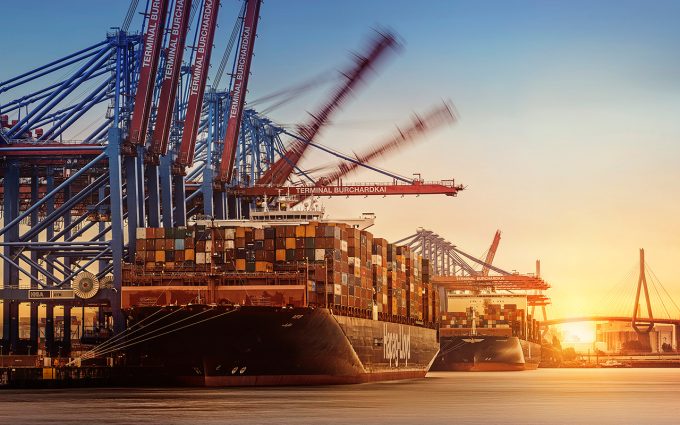Yang Ming to order 13 newbuild box ships for fleet renewal and new markets
Yang Ming today announced plans to acquire 13 containerships ranging in capacity from 8,000 to ...
FDX: ABOUT USPS PRIVATISATIONFDX: CCO VIEWFDX: LOWER GUIDANCE FDX: DISRUPTING AIR FREIGHTFDX: FOCUS ON KEY VERTICALFDX: LTL OUTLOOKGXO: NEW LOW LINE: NEW LOW FDX: INDUSTRIAL WOESFDX: HEALTH CHECKFDX: TRADING UPDATEWMT: GREEN WOESFDX: FREIGHT BREAK-UPFDX: WAITING FOR THE SPINHON: BREAK-UP ALLUREDSV: BREACHING SUPPORTVW: BOLT-ON DEALAMZN: TOP PICK
FDX: ABOUT USPS PRIVATISATIONFDX: CCO VIEWFDX: LOWER GUIDANCE FDX: DISRUPTING AIR FREIGHTFDX: FOCUS ON KEY VERTICALFDX: LTL OUTLOOKGXO: NEW LOW LINE: NEW LOW FDX: INDUSTRIAL WOESFDX: HEALTH CHECKFDX: TRADING UPDATEWMT: GREEN WOESFDX: FREIGHT BREAK-UPFDX: WAITING FOR THE SPINHON: BREAK-UP ALLUREDSV: BREACHING SUPPORTVW: BOLT-ON DEALAMZN: TOP PICK

Hapag-Lloyd has near-doubled its orderbook with agreements for 24 new vessels.
The line has ordered 12 16,800 teu newbuilds from Yangzijiang Shipbuilding and 12 of 9,200 teu from New Times Shipbuilding.
The larger vessels will be used to add capacity to Hapag-Lloyd’s existing services, while the smaller ships will replace older units nearing the end of their useful life.
According to Alphaliner data, fifth-largest operator Hapag already has 23 box ships on order, with a total capacity of 354,062teu, which would add 15% to its current capacity of around 2.2m teu, a 7.5% capacity market share.
The new vessels will be equipped with liqueified gas dual-fuel engines, with low emissions, but can also run on biomethane, which would cut emissions by 95% compared with conventional propulsion systems. They will also be ammonia-ready.
The new ships, with a combined capacity of 312,000 teu and a value of about $4bn, will be delivered between 2027 and 2029. Hapag has already committed to long-term financing for $3bn.
“This investment is one of the largest in the recent history of Hapag-Lloyd, and it represents a significant milestone for our company as it pursues the goals of its Strategy 2030, such as to grow while also modernising and decarbonising our fleet,” said CEO Rolf Habben Jansen.
“Operating a fleet of more-efficient vessels will also enhance our competitive position and, thanks to the increase in capacity, we will continue to offer our customers a global, high-quality product.”
Just over 40% of Hapag’s fleet is chartered-in, a similar level to the three larger lines, Cosco, CMA CGM and Maersk. The largest box line, MSC, operates 6.1m teu, of which just under half is chartered. It also has the largest orderbook, of 1.9m teu.
Comment on this article